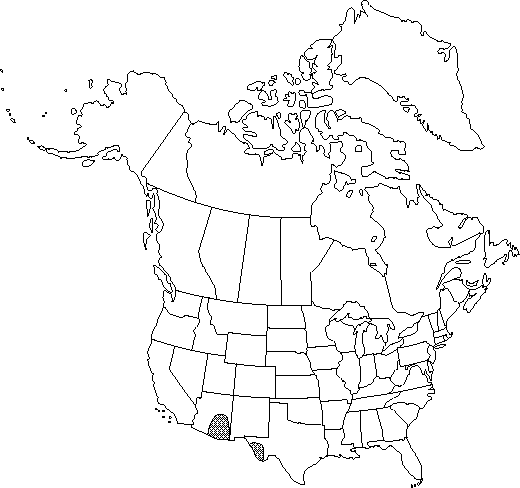Difference between revisions of "Ranunculus fasciculatus"
Fl. Mexic. ed. 2, 134. 1894.
FNA>Volume Importer |
FNA>Volume Importer |
(No difference)
| |
Revision as of 22:16, 16 December 2019
Stems erect or decumbent, not rooting nodally, hirsute to nearly glabrous, base not bulbous. Roots fleshy and somewhat tuberous. Basal leaf blades ovate to deltate in outline, 3(-5)-foliolate, 2.5-14.9 × 2.3-19.9 cm, leaflets 1-2×-lobed or -parted, ultimate segments narrowly oblong to elliptic or lanceolate, margins toothed, apex narrowly acute to rounded-acute. Flowers: receptacle hispid; sepals reflexed 1-2 mm above base, 5-10 × 3-5 mm, hispid; petals 11-16, yellow, 8-21 × 2-5 mm. Heads of achenes globose to ovoid, 6-13 × 7-9 mm; achenes 2.4-3.4 × 2-2.4 mm, glabrous, margin forming rib or narrow wing 0.1-0.4 mm wide; beak filiform from deltate base, straight, 1.8-2.5 mm, filiform tip often deciduous, leaving 1-1.2 mm deltate beak.
Phenology: Flowering late spring–summer (Jun–Aug).
Habitat: Stream banks, lakeshores, and marshes
Elevation: 1000-2200 m
Distribution

Ariz., Tex., Mexico.
Discussion
I am following G. L. Nesom (1993) in treating Ranunculus fasciculatus as a distinct species. This taxon was considered a variety of R. macranthus by L. D. Benson (1948) and a variety of R. petiolaris by T. Duncan (1980). These disparate opinions result from different interpretations of Mexican members of the R. petiolaris group.
Selected References
None.